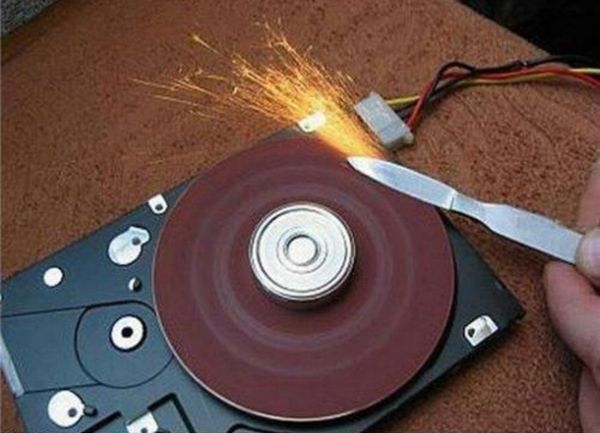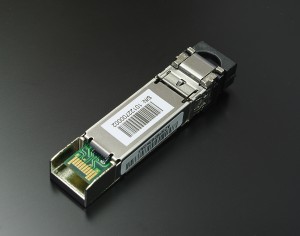Reading a post from Hans DeLeenheer (VEEAM) which ramped up quite a bit including responses from Calvin Zito (HP), Alex McDonald (NetApp) and Nigel Poulton. The discussion started on a comment that XIO had “special” firmware which improved IO performance. Immediately the term “short-stroking” came up which leads to believe X-IO is cheap-skating on their technologies. I was under the same impression at first right until the moment I saw that Richard Lary is (more or less) the head of tech at X-IO together with Clark Lubbers and Bill Pagano who also come out of the same DEC stable. For those of you who don’t know Richie, he’s the one who ramped up Digital StorageWorks back in the late 70’s/early 80’s and also stood at the cradle of VAX-VMS. (Yeah yeah, I’m getting old, google it if you don’t know what I’m talking about.)
FabricWatch FW-1050 alerts on SFP power failures
Whenever you see Fabricwatch throw a lot of a lot of FW-1050 warning messages around indicating an out of boundary power value on SFP’s it is most likely these ports have never been polled by the CP’s.
2014/10/08-04:04:27, [FW-1050], 94159, SLOT 5 | FID 128, WARNING, xxxxxx, Sfp Supply Voltage for port 7/13, is below low boundary(High=3630, Low=2970). Current value is 0 mV.
2014/10/08-04:04:27, [FW-1050], 94160, SLOT 5 | FID 128, WARNING, xxxxxx, Sfp Supply Voltage for port 7/15, is below low boundary(High=3630, Low=2970). Current value is 0 mV.
2014/10/08-04:04:27, [FW-1050], 94161, SLOT 5 | FID 128, WARNING, xxxxxx, Sfp Supply Voltage for port 7/20, is below low boundary(High=3630, Low=2970). Current value is 0 mV.
2014/10/08-04:04:27, [FW-1050], 94162, SLOT 5 | FID 128, WARNING, xxxxxx, Sfp Supply Voltage for port 7/22, is below low boundary(High=3630, Low=2970). Current value is 0 mV.
2014/10/08-04:04:27, [FW-1050], 94163, SLOT 5 | FID 128, WARNING, xxxxxx, Sfp Supply Voltage for port 7/28, is below low boundary(High=3630, Low=2970). Current value is 0 mV.
2014/10/08-04:04:27, [FW-1050], 94164, SLOT 5 | FID 128, WARNING, xxxxxx, Sfp Supply Voltage for port 7/30, is below low boundary(High=3630, Low=2970). Current value is 0 mV.
On a normally operational port FOS will poll the SFP’s so now and then to check on various things. This includes the usual SFP inventory like serial number, Vendor ID, SFP capabilities etc. Additional things that checked are the TX and RX power levels, voltage and current being used on that particular SFP.
Getting rid of browser cache polution

I always try to keep a clean slate on my Linux box. Not only when it comes to security but one thing I really hate is the massive amount of stuff that gets downloaded as “chemical waste by-products” like a gazilion revisions of twitter and other (anti-)social media icons, pictures, style-sheets etc. etc. etc.
Obviously you can set limitations to the size of the cache but to prevent this pollution from being retained across reboots and clogging up the inode tables with useless entries.
Why Docker is the new VMware
5 Years ago wrote this article:
Server virtualisation is the result of software development incompetence
Yes, it has given me some grief given the fact 99% of respondents did not read beyond the title and made false assumptions saying I accused these developers for being stupid. Tough luck. You should have read the entire article.
Anyway, in that article I did outline that by using virtualization with the methodology of isolating entire operating systems in a container is a massive waste of resources and the virtualisation engine should have focused on applications and/or business functionality. It took a while for someone to actually jump into this area but finally a new tool has come to life which does exactly that.
8 – Quality of Service
Historically the need to segregate fibre-channel traffic and have the option to prioritize frames and flows has not been high on design agenda of most of the companies I had under my eyes. Most often if the need is there to differentiate between different levels of importance between the various business applications you’ll very often see that additional equipment is purchased and the topologies are adjusted as needed. This obviously works well however when the ratio of capex vs opex is out of balance but the business is still retaining the need for your applications to be separated in order of criticality, you need to consider other options. As in the IP networking world Fibre-Channel has a similar functionality which has been in the FC standards for a long time but only recently has been introduced by some vendors.
7 – Fabric Security
This topic is hardly ever touched when fabric designs are developed and discussed among storage engineers but for me this always sits on my TODO list before hooking up any HBA or array port. It is as important in the storage world as it has been in the IP networking sector for decades. Historically the reasoning to not pay attention to this topic was that the SAN was always deeply embedded in tightly controlled data-centres with strict access policies. Additionally the use of fibre-optics and relatively complex architectures to the storage un-inaugurated even more, unfairly, devalued the necessity of implementing security policies.
Let me make one thing clear: Being able to gain access to a storage infrastructures is like finding the holy grail for archaeologists. If no storage infrastructure security is implemented it will allow you to obtain ALL data for good or bad purposes but even worse it also allows the non-invited guest to corrupt and destroy it. With this chapter I will outline some of the procedures I consider a MUST and some which you REALLY should take a good look at and if possible implement them.


